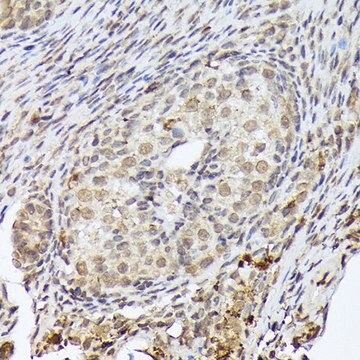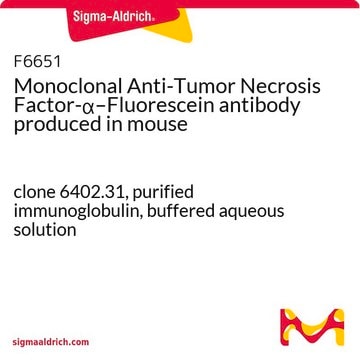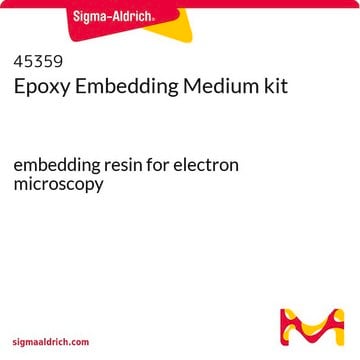ABE1889
Anti-ZMYND11 Antibody
serum, from rabbit
Sinónimos:
Zinc finger MYND domain-containing protein 11
About This Item
Productos recomendados
biological source
rabbit
Quality Level
antibody form
serum
antibody product type
primary antibodies
clone
polyclonal
species reactivity
human
species reactivity (predicted by homology)
mouse (based on 100% sequence homology)
technique(s)
ChIP: suitable (ChIP-seq)
western blot: suitable
NCBI accession no.
UniProt accession no.
shipped in
dry ice
target post-translational modification
unmodified
Gene Information
mouse ... Zmynd11(66505)
General description
Specificity
Immunogen
Application
Epigenetics & Nuclear Function
Chromatin Biology
Chromatin Immunoprecipitation Analysis: A representative lot detected ZMYND11 occupancy of c-Myc gene by ChIP using human osteosarcoma U2OS cell nuclear extracts. ZMYND11 shRNA treatment greatly reduced the c-Myc gene fragments in ChIP (Courtesy of Dr. Hong Wen, UT M.D. Anderson Cancer Center, TX).
Chromatin Immunoprecipitation (ChIP) Analysis: A representative lot detected ZMYND11 chromatin occupancy by ChIP using chromatin preparations from human osteosarcoma U2OS cells. Decreasing H3K36me3 level by SETD2 knockdown reduced ZMYND11 target genes association (Wen, H., et al. (2014). Nature. 508(7495):263-268).
ChIP-seq Analysis: A representative lot detected ZMYND11-targeted chromatin sites by a genome-wide ChIP-seq analysis using chromatin preparations from human osteosarcoma U2OS cells. The ZMYND11 occupied sites are highly enriched in introns and exons, but not promoters of targeted genes (Wen, H., et al. (2014). Nature. 508(7495):263-268).
Western Blotting Analysis: A representative lot detected exogenously expressed human BS69 protein in yeast and QT-6 quail fibroblasts (Ladendorff, N.E., et al. (2001). Oncogene. 20(1):125-132).
Quality
Western Blotting Analysis: A 1:500 dilution of this antibody detected ZMYND11 in 20 µg of U2OS nuclear extract.
Target description
Physical form
Storage and Stability
Handling Recommendations: Upon receipt and prior to removing the cap, centrifuge the vial and gently mix the solution. Aliquot into microcentrifuge tubes and store at -20°C. Avoid repeated freeze/thaw cycles, which may damage IgG and affect product performance.
Other Notes
Disclaimer
Not finding the right product?
Try our Herramienta de selección de productos.
Storage Class
12 - Non Combustible Liquids
wgk_germany
WGK 1
flash_point_f
Not applicable
flash_point_c
Not applicable
Certificados de análisis (COA)
Busque Certificados de análisis (COA) introduciendo el número de lote del producto. Los números de lote se encuentran en la etiqueta del producto después de las palabras «Lot» o «Batch»
¿Ya tiene este producto?
Encuentre la documentación para los productos que ha comprado recientemente en la Biblioteca de documentos.
Nuestro equipo de científicos tiene experiencia en todas las áreas de investigación: Ciencias de la vida, Ciencia de los materiales, Síntesis química, Cromatografía, Analítica y muchas otras.
Póngase en contacto con el Servicio técnico








